I missed out on the 1970s.
My mother, however, did not. She hit her teens in the seventies. Because she was a swinging hip-cat then, she spent hours and hours losing herself in a euphoric aphrodisiac called board games.
I may be taking a little swipe at my mother (I’ve never forgiven her for beating me so consistently at Monopoly). Still, for everything else the woman was, she was a wealth of information about board games. She was also a wealth of ACTUAL board games.
Like many parents of the time, she hoarded the things her parents gave her. When she aged out of playing board games with her family, her parents packed them away. When she eventually moved out at seventeen (something else she never let me live down), she took her favorites with her and started to buy a “few” more.
Eventually, she moved on to more complex games like wargames and tabletop roleplaying games. However, when I was born, she still had access to all the board games she’d collected through the years.
There weren’t many available from the 1970s, as these were the years between when she fell out of playing board games with her family and before she got her own money. However, she did have some that she broke out to play with me when I was an impressionable child, and the seventies games deserved a chance to get their own spotlight.
Bottom Line up Front: Can you Guess Who took the top spot? It’s a Mystery! Guess Who? takes the ultimate place for having the shelf life to still be a popular game today and for the ease with which it can be learned. The gameplay is also primarily involved in developing your critical thinking and developing empathy, which I approve of.
Criteria
So how does someone choose which board game is their grooviest swinger? Well, for me, it’s gonna come down to about four different criteria.
Value
My grandparents were never rich. My mother was never rich. I’m trying, but I’m not there yet. If a game can be played in more ways or offers a higher value for a better price, it will end up with a more valuable spot on this list.
Longevity
Some games burst onto the scene with much fanfare and then faded away. Some slid onto the stage and remained like the most fun igneous rock in a pile. They will end up in a better spot if they’re more like the latter two.
Understanding
It doesn’t matter if a game is simple or complex. A well-written manual can make all the difference. This criterion is all about how well the information is written. If it can be written so that a child can understand it well enough to play, then it will get a better place on the list.
Fun
What’s the point of playing a game if it isn’t fun? This is the most subjective and arguably the most important. This is my list, and if you don’t like it or disagree with it? Go make your own!
19.) Invasion America
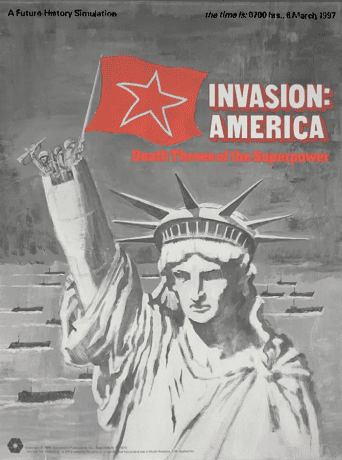
- Publisher: SPI
- Year Released: 1976
- How Many Can Play?: 2-5
- Currently Available?: No
- Average Play Time: 240
- Age Range: 12+
The Cold War was in full swing in 1976, and the game company SPI decided to go down an increasingly well-trod path: What if Russia invaded America?
This is what’s referred to as a “Chit Game.” It uses half-inch square chits to represent different ground and air units on a hex map of the United States of America. Units move and engage in combat on individual turns. That’s standard for most chit-games. Interestingly, this game included a simple but effective leveling system.
When units are deployed, they are considered to be untried. Untried units don’t have all their stats listed. When a unit engages in combat, they become tested and known factors. At this point, their combat effectiveness becomes far more marked (unless they die.)
I tried playing this exactly once and got bored twenty minutes in. But I was seven years old.
18.) John Carter: Warlord of Mars
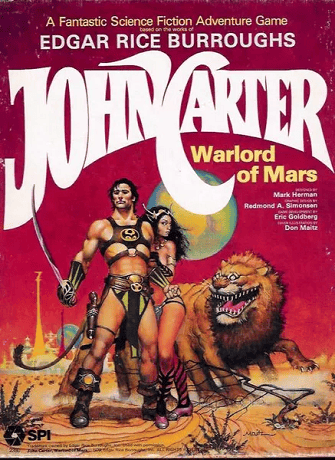
- Publisher: SPI
- Year Released: 1979
- How Many Can Play?: 2-6
- Currently Available?: No
- Average Play Time:
- Age Range: 12+
Some of my favorite books in High School were Edgar Rice Burroughs’ Barsoom series.
John Carter was the archetypal codifier of science fiction and action tropes that still appear today. He was a hard-fighting, honorable man who may have also been Tarzan’s great-grandfather and a knight in Arthurian times. (The Lore is very complex.) Unfortunately, he was also a passionate defender of the Confederacy, so I can’t enjoy him like I once did.
A lot of that came from this “board” game. Honestly, this is more of a mini TTRPG. There’s no board to speak of, and much of the action is accomplished in a fashion remarkably similar to typical RPGs. You pick a character and take them through an adventure primarily done with your imagination, the dice, and tables of numbers.
However, I’ve got a lot of great memories, and it’s technically listed as a board game. So I’m putting it on the list, but high.
17.) Darkover
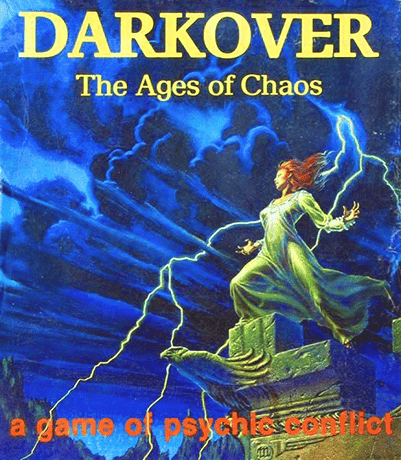
- Publisher: Eon
- Year Released: 1979
- How Many Can Play?: 2-4
- Currently Available?: No
- Average Play Time: 60 Minutes
- Age Range: 12+
Darkover is an exhilarating board game that transports players to the captivating world of Marion Zimmer Bradley’s renowned science fiction series. With its rich lore and intricate storytelling, this game encapsulates the essence of Darkover, enticing both avid fans and newcomers alike. You’re immersed in a visually stunning universe when you open the box.
Darkover is more than just a game; it’s an epic adventure. As players navigate the treacherous terrain, they encounter formidable challenges and make crucial decisions that shape the fate of their chosen House.
The game seamlessly blends strategy and diplomacy, ensuring that every move counts. Will you forge alliances or engage in ruthless competition? The choice is yours.
What truly sets Darkover apart is its “captivating narrative.” That’s a fancy way of saying it’s an early example of a Legacy Game.
The game features a dynamic storyline that evolves with each playthrough, offering endless possibilities and ensuring that no two games are identical. As you uncover hidden secrets, engage in political intrigues, and harness the power of psychic abilities, you become fully immersed in the gripping world of Darkover.
16.) Elric Battle at the End of Time
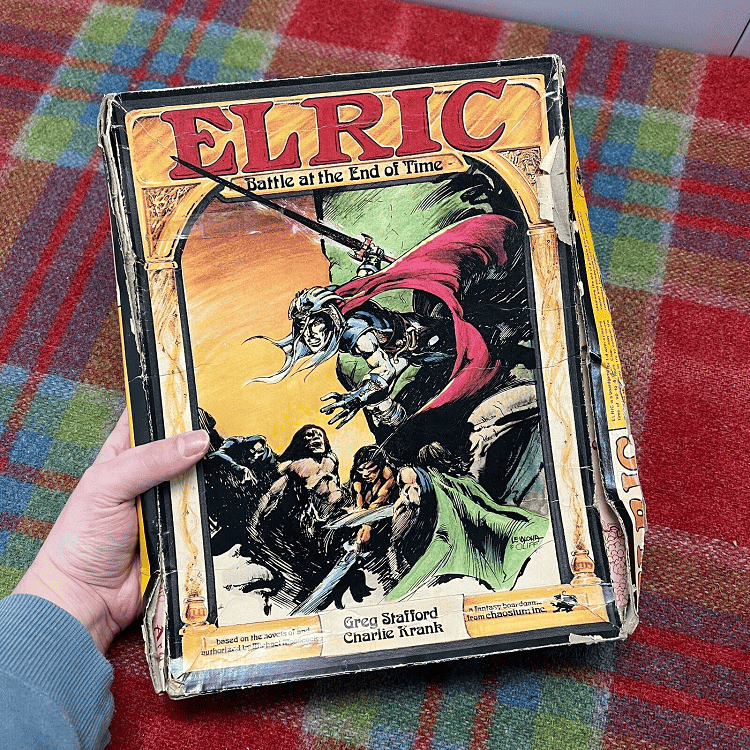
- Publisher: Chaosium
- Year Released: 1977
- How Many Can Play?: 1-4
- Currently Available?: No
- Average Play Time: 120 min
- Age Range: 10+
This game is much like if you smushed numbers 19 and 20 together. Elric of Meninbourne was one of Michael Moorcock’s most famous characters. He was an amoral anti-hero who rode the line of anti-villain who was constantly in a mental war with his magic sword for control of his soul. It’s part chit-game and part miniature tabletop roleplaying game based on an existing series of books.
This game is based on his world, and he plays a much smaller part than you might expect.
You pick a nation, which is the same as a character, and move your armies through six printed scenarios using the provided board, the included chits, and the spell tiles. The spell tiles are one of the main ways this game distinguishes itself because they’re made of wood and printed with beautiful red writing.
The most remarkable thing, however, is that this game includes all the instructions necessary to create your own scenarios after you’ve played through the six included.
15.) Kyoto Shogi
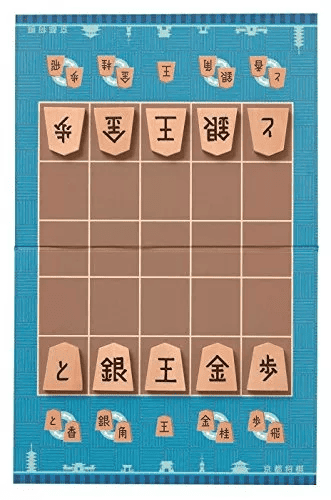
- Publisher: 2 Players
- Year Released: 1976
- How Many Can Play?: 2
- Currently Available?: No
- Average Play Time: 10-30 min
- Age Range: 8+
Kyoto Shogi offers a unique and captivating experience for both enthusiasts of Shogi and those new to the game. Like regular Shogi, Kyoto Shogi is played on a 9×9 board and features various pieces, each with movement abilities and strategic value. Unlike the more orthodox version, this includes a specialized variation of more orthodox elements.
The game’s objective is to capture the opponent’s king while protecting your own.
However, Kyoto Shogi introduces additional layers of complexity by implementing “drop rules,” where captured pieces can be reintroduced onto the board as one’s own. What truly sets Kyoto Shogi apart is the emphasis on strategic planning and positional play.
Players must carefully consider their moves, anticipating their opponent’s tactics and strategically positioning their pieces for optimal board control.
With a wide array of viable strategies and tactical maneuvers, every game of Kyoto Shogi presents a unique challenge and encourages creative thinking. The game’s complexity and strategic depth make it a favorite among Shogi enthusiasts who crave a fresh twist on the traditional game.
14.) Starship Troopers
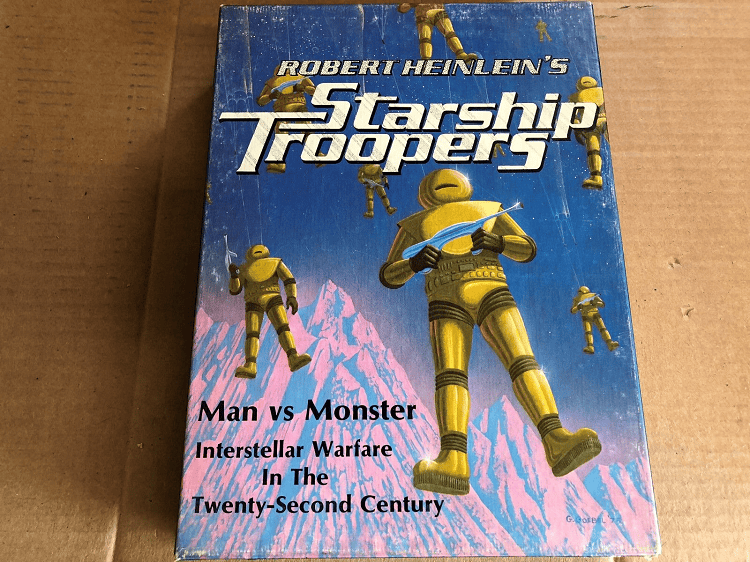
- Publisher: Avalon Hill
- Year Released: 1976
- How Many Can Play?: 1-2
- Currently Available?: No
- Average Play Time: 120 Minutes
- Age Range: 12+
Starship Troopers has had an… interesting adaptational history.
It was written by Robert A. Heinlein in 1959. It’s a story that skewered many topical themes of its day, like xenophobia, jingoism, militarism, and the moral decline those can cause. Technically, it also has a coming-of-age narrative shoved in there, but the setting detracts from that. It inspired many popular IPs today, and you can see some of its themes in Warhammer 40k, Halo, and many more.
This board game is one of its earliest adaptations. It’s a chit-game that sees you taking control of either the human army or if you have a second player, the alien army. The alien player decides where the central hive is, and the units are placed as discussed in the introduction board.
A third faction is controlled by dice and the board, but they’re not as essential or fantastic as the other two. Mainly, they serve as terrain features.
Players battle through seven pre-written scenarios as they drive the aliens back to their homeworld and eradicate them.
The game is very much a product of its time. I enjoyed it as a child, but I might not if I tried playing it for the first time now, having read the book.
A second edition was released to adapt the movie version in 2000, but I never played that one and have no plans to do so.
13.) Doctor Who
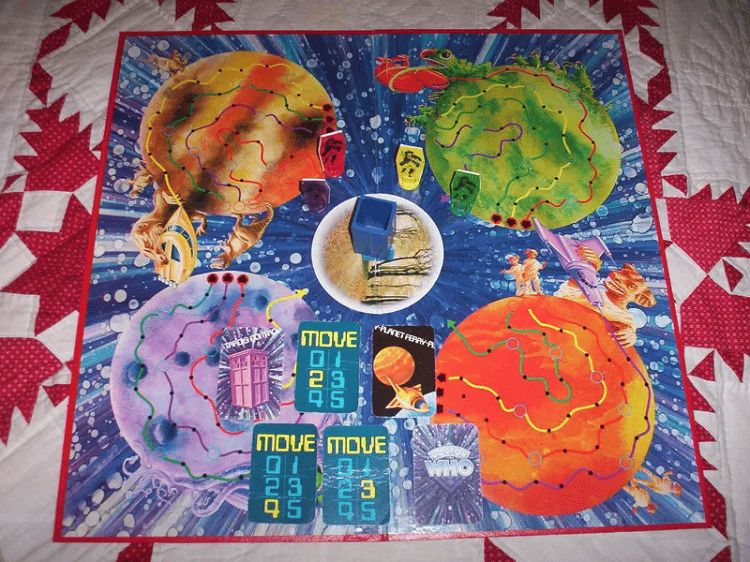
- Publisher: Strawberry Fayre
- Year Released: 1975
- How Many Can Play?: 2-4
- Currently Available?: No
- Average Play Time: 30 Minutes
- Age Range: 8+
By 1975, Doctor Who had existed as a franchise for twelve years. Four different actors had taken on the role of the titular Doctor, and the fourth one was going strong. Tom Baker brought a quirky, almost relatable charm to the character that had always been portrayed as various levels of grandfatherly to this point.
Players take on the role of Tom Baker’s Doctor as they race around the board to get back to the TARDIS.
This game is almost entirely luck based. As you move, you land on various black dots and draw a card, then follow its instructions. They can move you forward or backward on the board, allowing you to mess around with other players.
It was usually a quick game, but Mom enjoyed it. Tom Baker was her favorite Doctor, and she’d always quote lines that I hadn’t heard in an accent that I was too young to identify as a poor attempt at a British accent.
12.) Perfection

- Publisher: Milton Bradley
- Year Released: 1973
- How Many Can Play?: As many as you could fit in a room
- Currently Available?: Yes
- Average Play Time: 6 minutes
- Age Range: $+
ANXIETY! The GAME! This game taught me a lot about life. It taught me how to be patient. It taught me how to make quick decisions and be precise in my movements. It taught me to keep calm under a ticking clock with much pressure.
It also taught me that my mother was a highly cut-throat individual who may have had a child specifically to beat this game at. She took that much delight in it.
The idea is that you set a timer, and then you race to put the pieces into the holes that match their shape. If they weren’t all full by the time the timer went off, a mechanism inside would activate, and the board would pop up, scattering the pieces around itself.
I enjoyed playing this game when I got old enough to understand how to do it. It was helpful to learn my shapes and the lessons above. It was also something that I enjoyed with my own children later in life. (Although I like to think I was much kinder to them than my mother was to me.)
11.) Connect 4
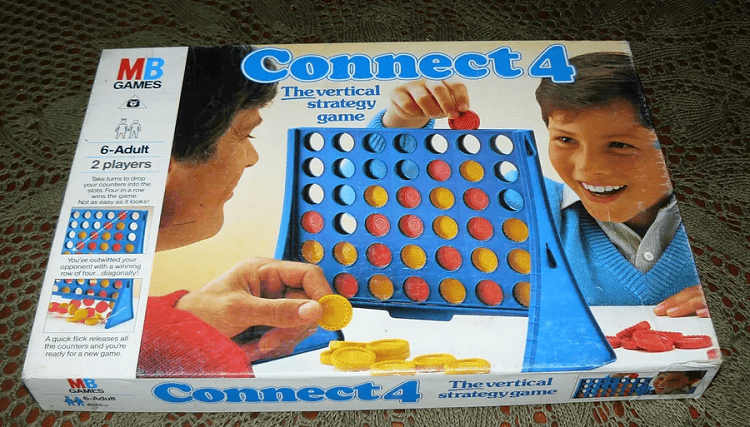
- Publisher: Milton Bradley
- Year Released: 1974
- How Many Can Play?: 2 Players
- Currently Available?: Yes.
- Average Play Time: 10 minutes
- Age Range: 6+
I was THIS CLOSE To including this game under the name “The Captain’s Mistress” because that’s another name for other versions of this. Ultimately I went with the more popular name.
This game is one that many people will recognize. It’s a vertical board that uses checkers. The players take turns dropping different colored checkers into the slots. The first one to get an unbroken line of four pieces wins.
It’s a straightforward game that people pick up when they’re four and can just play for the rest of their lives. You can also learn tips and tricks to all but ensure your victory. Adults are also known to get SURPRISINGLY competitive with this game. Seeing how into it people will get, staring each other dead in the eyes as they take turns plopping the pieces into the slots, is almost surreal.
It’s enjoyable, and it’s lasted for fifty years. I might have rated it higher if Mom hadn’t been as aggressive with it as she was.
10.) Sorcerer

- Publisher: SPI
- Year Released: 1975
- How Many Can Play?: 1-6
- Currently Available?: No
- Average Play Time: 60 Minutes
- Age Range: 10+
The seventies were a prevalent time for chit-games. Board Game companies were growing like wildfire at this time. Companies were making tons of different games for an increasingly hungry demographic.
The creation of Dungeons and Dragons in the early 1970s showed a market for the previously more niche wargame community to expand to more general audiences. It would be decades before this became mainstream, but companies were curious about how far they could push this game.
Chit-games were easy. You came up with some rules, put hexes over a map, and included punch-out cardboard tokens, and you were done. A great mix of the simple and the complex. Sorcerer is about a magical war between seven dimensions represented by seven colors. This game came out nearly twenty years earlier than Magic: the Gathering, which had a similar premise.
It’s another one that I didn’t often play, as it was very complex, but this one was less time intensive, so I, an eight-year-old, could sit still long enough to enjoy it.
9.) Othello
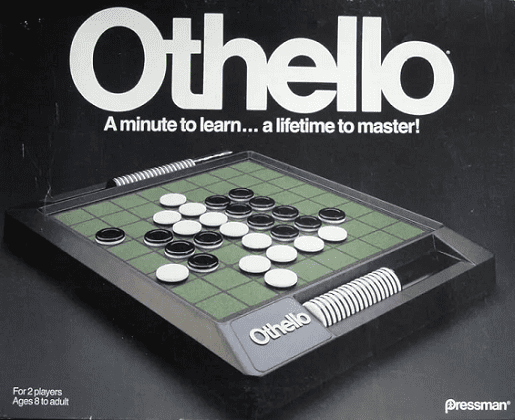
- Publisher: Goro Hasegawa
- Year Released: 1971
- How Many Can Play?: 2
- Currently Available?: Yes
- Average Play Time: 30 Minutes
- Age Range: 8+
The game of Reversi was first created in 1883. In 1971, a Japanese salesman devised a different way to start the game and began what would soon become the much more marketable Othello. It was named after the character of the same name from Shakespeare’s play, making the black-and-white aspect a little more problematic.
Regardless, our set came from like 1979 and had the “A minute to learn, a Lifetime to master” printed right on the box. True to that tagline, this game is straightforward to pick up and has a surprising amount of complexity. Players place discs of their color on alternating turns. If an opponent’s disk is placed between two of your own, that disc is flipped to your color.
It can be played fast or slow, with great strategy, or counting on luck. …But strategy usually wins. Much to my own chagrin.
8.) Dragonlord
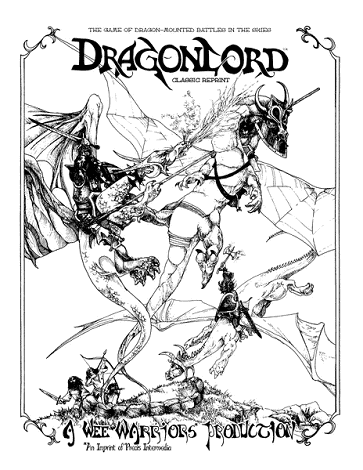
- Publisher: Wee Warriors
- Year Released: 1976
- How Many Can Play?: 2-10
- Currently Available?: Very No.
- Average Play Time: 120 Minutes
- Age Range: 12+
I don’t know where Mom got this. She may have picked it up for a song from someone in the late seventies. Regardless, it’s long gone now, much to my chagrin. If you’re dedicated, you can find a PDF online, but that’s not quite the same.
This game is one that was published in 1976, and it was designed as a fantasy version of aerial combat. The layout was such that it was designed with the acknowledgment that ground-based characters couldn’t move to some parts, making the square map (another oddity of the time) two-and-a-half dimensions. It was all printed on paper, and my mom had managed to laminate most of the pieces, except for the map.
You made your character separate from the Dragon, and then you went toe-to-toe in the skies in four different scenarios. As I recall, it was fast-paced and fun to play. I wish I had been less of a rambunctious child, so I could enjoy it longer.
7.) Melee
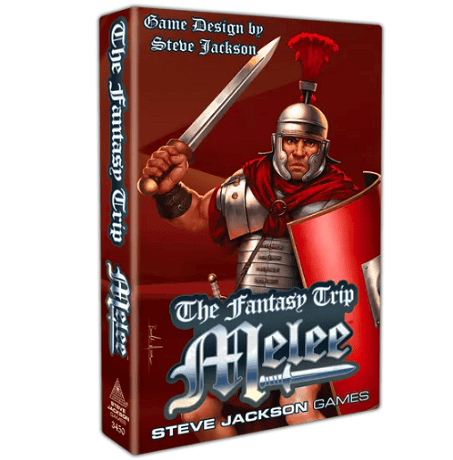
- Publisher: Steve Jackson Games
- Year Released: 1977
- How Many Can Play?: 2
- Currently Available?: Kind Of
- Average Play Time: 15 minutes
- Age Range: 10+
This was another chit-game. It played out like a simplified version of combat from popular TTRPGs of the time.
You picked characters with different stats that decided how hard and fast they hit and the weapons they could wield. Then, you went up against each other with a straightforward goal: Be the last one standing.
This is mainly interesting because this game would evolve into Advanced Melee, which was a part of The Fantasy Trip roleplaying system. After some legal kerfuffles, the game’s creator would take the ruleset he had developed and use it in a system called GURPS, a system that can be used for almost any story you want to tell and is still in print.
6.) Class Struggle

- Publisher: Avalon Hill
- Year Released: 1978
- How Many Can Play?: 2-6 Players
- Currently Available?: No
- Average Play Time: 90 Minutes
- Age Range: 12+
I’ve mentioned before that I hate Monopoly. I really do for So Many Reasons. I’ll talk about them one day.
Instead, I like to focus on as many Anti-Monopoly games as possible, like this one. Class Struggle is a Very Political game designed primarily as an instructional vehicle for college students. There’s even a section in the rule booklet about how to use it to teach in college-level classes. Ostensibly, it’s about why Marxism is superior. However, I see it more as a game about unionization.
The Whole point is that workers move around the board, fighting against the Corporation.
It was a fun game. I didn’t UNDERSTAND it as a child. Mom never taught me about it. She also never played it with me. It’s one of a pile of things that I took with me when I eventually moved out.
5.) Pay Day
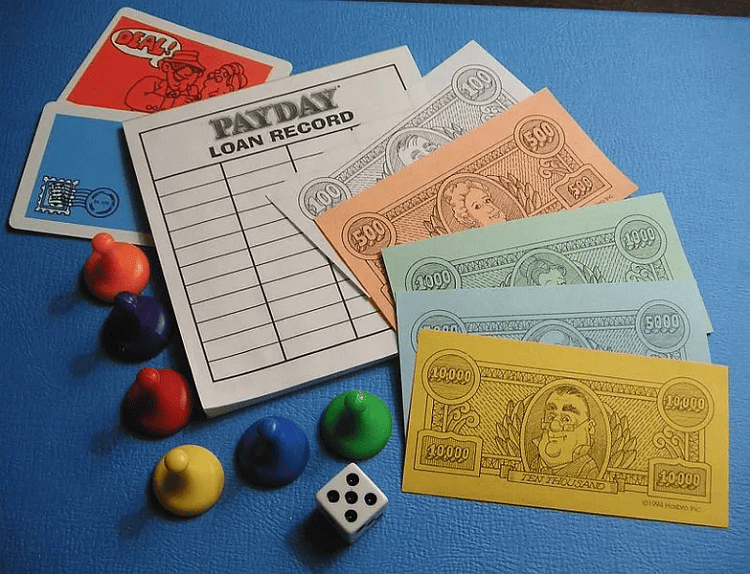
- Publisher: Hasbro
- Year Released: 1975
- How Many Can Play?: 2-6
- Currently Available?: Yes
- Average Play Time: 30 Min+
- Age Range: 8+
I always preferred this game to Monopoly. This was more fun as a child because it was more visually attractive.
It was also less abstract and took itself less seriously. The game is set up in such a way that it takes place over the course of a month, dictated by the number of spaces on the board. Players decide how many months they will play through and then start. The goal is simple, make it to payday without having to take out a loan. At the end of the game, the one with the most money wins.
It’s luck-based, but it was a lot more fun for a child than the competition.
4.) Boggle
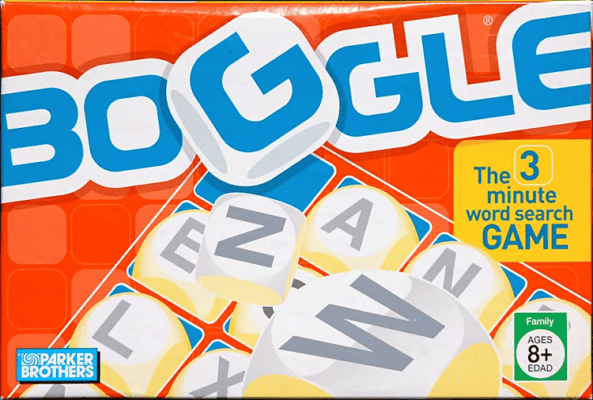
- Publisher: Waddingtons
- Year Released: 1972
- How Many Can Play?: 1-8 Players
- Currently Available?: Yes
- Average Play Time: 10 Minutes
- Age Range: 8+
A fast-paced game about finding words in nonsense.
Letters are randomly arranged in a four-by-four grid, and players have three minutes to find as many words as possible.
I wish I had more to say, but this game speaks for itself! It was fast-paced and fun, potentially contributing to my eventual career choice. Different versions have been published in the years since, and I’ve lost count of how many.
…Even if you have to do some work to figure out what it’s saying.
3.) Crossfire
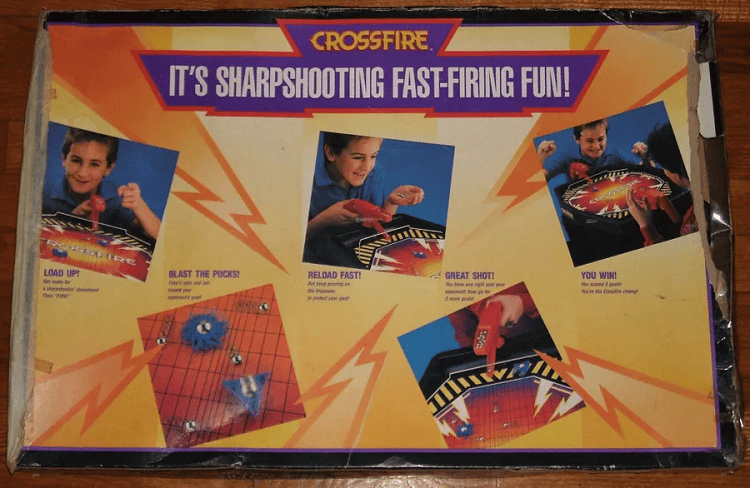
- Publisher: Milton Bradley
- Year Released: 1971
- How Many Can Play?: 2
- Currently Available?: Yes
- Average Play Time: 10 Minutes
- Age Range: 7+
Children of the nineties need no further introduction.
Say it with me: “CrossFIRE!”
Honestly, I rarely played this game, but the ad campaign in the nineties was a great example of marketing. Mom didn’t rush out and buy a copy like I wanted, but instead went and got her set out of storage. It wasn’t all it was cracked up to be.
I am one hundred percent putting this game this high because of successful advertising.
2.) Which Witch?
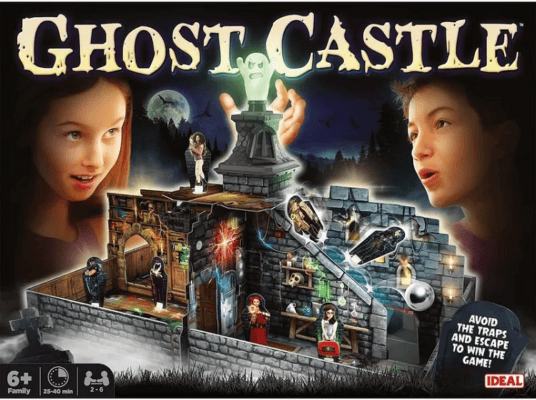
- Publisher: Milton Bradley
- Year Released: 1970
- How Many Can Play?: 2-4
- Currently Available?: Yes, (As Ghost Castle)
- Average Play Time: 45 Minutes
- Age Range: 6+
One of the earliest examples of a 3D Board Game.
Players took on the roles of children exploring a Witches’ Home. The problem is that this castle is home to Three instead of one witch! Each player controls a child while exploring a track, hoping to avoid a few obstacles. Players would draw from three decks of cards, decided by the dice rolls.
Ghoulish Gertie cards would trigger the players to drop a silver ball down the chimney shoot. Where it rolled dictated what would happen. It would either move an obstacle or hit a player. If a player’s token was hit, they would be forced back to where they began. If a player drew a Wicked Wanda card, they’d swap their child with a mouse and be stuck until they managed to draw a Good Glenda card.
I absolutely loved this game. It was always a blast. The ball made it a fun, exciting challenge. The different decks were fun and spooky enough to be enjoyable without giving me nightmares.
1.) Guess Who?
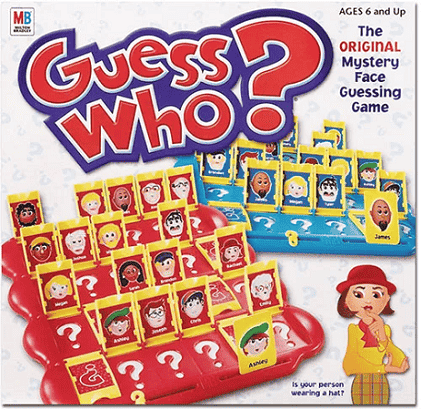
- Publisher: Milton Bradley
- Year Released: 1979
- How Many Can Play?: 2
- Currently Available?: Very Yes
- Average Play Time: 20 Minutes, theoretically.
- Age Range: 6+
Okay. Hear me out on this one.
This game came out at the end of the seventies and has been in production ever since. It is a VERY Simple game to learn.
Players each pick a character from the same pile of 24 characters. They then ask yes-or-no questions to start narrowing down the available options. It’s very quick, especially after you play a few times.
Unless you were playing with my mother. Who used this game to teach me the meaning of the word: Pedant.
“Does your character wear a hat?” “You’re going to have to be more specific than that.” She would also outright LIE. Because she wanted to try to teach me how to tell a lie from the truth and to think critically.
…Or she just didn’t want to lose to a ten-year-old. Either way. This game DID teach me about a lot of things it shouldn’t necessarily have done. Regardless, it’s a great game that people of any age can pick up and be playing in a few minutes, and for that reason, I’m dubbing it the best game of the seventies.
Frequently Asked Questions
Question: Did you play all of these games?
Answer: Most of them!
Question: How many of them are available today?
Answer: About half of them, honestly. The seventies released a lot of really good games!
Question: Why so many Chit-games?
Answer: Because I primarily based it on my own experience, and my mother had more chit-games than one person necessarily should!
Conclusion
The seventies were an exciting time for many reasons. People were experiencing new things, and the economy wasn’t excellent. It was cheap to produce. That’s why many of these games were either mostly or nothing but paper.
The release of an increasing number of roleplaying games also demonstrated that there was a large and untapped market for companies to start advertising too!
Many of the games released here are still published today, and you can go down to the local big box store and pick yourself up a little piece of the seventies!
- Top Vintage 1960s Board Games: What’s Your Bag?
- Battlefields Across Time and Space, The Best Risk Board Game Versions
- Best Party Board Games
- Top Games Like Splendor to Play Next
- Best 2000s Board Games
- Best 1970s Board Games: Playing on the Flip Side - July 5, 2023
- Best Economics Board Games: Ruining Friendships and Emboldening Cut-throats - June 3, 2023
- Top Vintage 1960s Board Games: What’s Your Bag? - May 27, 2023

